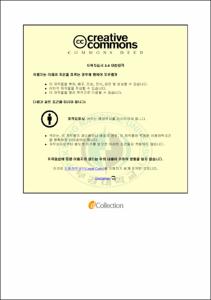전기분해로 처리한 선박평형수의 해양생태위해성에 관한 연구
- Abstract
- Abstract
The international Convention for Control and Management of the Ship's Ballast Water and Sediments (BWM convention) has been adopted by the IMO (International Martime Organization) in 2004 to prevent transfer of exotic species by ballast water. Since then, many type of BWMSs (Ballast Water Management Systems) have been developed. However the processing method using Electrolysis makes active substances to remove the organisms, which generates relevant chemicals. Therefore, when treated ballast water is discharged into reciving water, it may cause toxic effects to marine organisms.
To verify the unacceptable effects of ship's ballast water treated by Electrolysis on marine ecosystem, the WET (Whole Effluent Toxicity) test using diatom, Skeletonema costatum as primary producer, rotifer, Brachionus plicatilis as first consumer and olive flounder fish, Paralichthys olivaceus as predetor, chemical analysis for identifying substances produced by Electrolysis BWMS was conducted. In addition, Marine ERA (Ecological Risk Assessment) using PBT properties and PEC (Predicted Environmental Concentration) / PNEC (Predicted No Effect Concentration) ratios of produced substances was conducted.
S. costatum was the most sensitive organism that gave the NOEC (No Observed Effect Concentration), LOEC (Lowest Observed Effect Concentration) and EC50 (50% Effect Concentration) values of 12.50%, 25.00% and 83.32%, respectively from WET test results for 20psu of discharged water. In the chemical analysis results, 21 of the substances were newly produced by the Electorysis BWMS, composing of bromate, 9 volatile halogenated organic compounds, 2 halogenated acetonitriles, 8 halogenated acetic acids and chloropicrin. Twenty one substances was not considered as persistance and bioaccumulative chemicals because the half-life and log Kow value of substances did not exeed 60 days and 3 days, respectively. Uncertainty of toxic property of substances was high. However, the PECs of 21 substances calculated by the MAMPEC program ranged from 7.02×10-4 to 5.39×100 μg/L and PNECs of them ranged from 2.00×10-2 to 4.24×103 μg/L. The PEC/PNEC ratio of 20 substances did not exeed 1. Therefore, the results of the WET test with discharged water from Electrolysis BWMS and ERA for generated substances in the discharged water indicated that the ship's ballast water treated by Electrolysis was not predicted an adverse effect on the marine ecosystem.
However, WET test results were shown that the ship's ballast water treated by Electrolysis can have potential negative effects on the marine ecosystem. Therefore aquatic toxic effect of discharged water should not be overlooked and should be kept an eye out to prevent an adverse effect on marine ecosystem through continuous monitoring system.
- Issued Date
- 2013
- Awarded Date
- 2013. 8
- Type
- Dissertation
- Publisher
- 부경대학교
- Affiliation
- 대학원
- Department
- 대학원 해양학과
- Advisor
- 문창호
- Table Of Contents
- 목 차
Abstract
List of Tables
List of Figures
제1장 서론
1.1 선박평형수, 그리고 해양생태계 교란
1.2 선박평형수 국제협약
1.3 전기분해를 이용한 선박평형수관리장치
1.3.1 개발현황
1.3.2 생물제거원리 및 해양환경영향
1.4 연구목적
제2장 재료 및 방법
2.1 시료 채집
2.2 해양생태독성평가
2.2.1 해양생태독성
2.2.2 실험농도 설정 및 대상종 선정
2.2.3 Skeletonema costatum을 이용한 조류성장저해실험
2.2.4 Brachionus plicatilis를 이용한 급·만성 독성실험
2.2.5 Paralichthys olivaceus를 이용한 급·만성 독성실험
2.2.6 실험의 유효성
2.2.7 통계분석
2.3 화학물질 분석
2.4 해양생태위해성평가
2.4.1 생태위해성평가
2.4.2 해양생태위해성평가 방법
제3장 결과
3.1 해양생태독성실험
3.1.1 Skeletonema costatum 성장저해실험
3.1.2 Brachionus plicatilis 급·만성 독성실험
3.1.3 Paralichthys olivaceus 급·만성 독성실험
3.1.4 영향농도
3.2 화학물질 분석
3.3 해양생태위해성평가
3.3.1 지속성, 생물축적 및 생태독성
3.3.2 PEC, PNEC
제4장 고찰
제5장 결론
제6장 참고문헌
- Degree
- Master
- Files in This Item:
-
-
Download
 전기분해로 처리한 선박평형수의 해양생태위해성에 관한 연구.pdf
기타 데이터 / 1.59 MB / Adobe PDF
전기분해로 처리한 선박평형수의 해양생태위해성에 관한 연구.pdf
기타 데이터 / 1.59 MB / Adobe PDF
-
Items in Repository are protected by copyright, with all rights reserved, unless otherwise indicated.